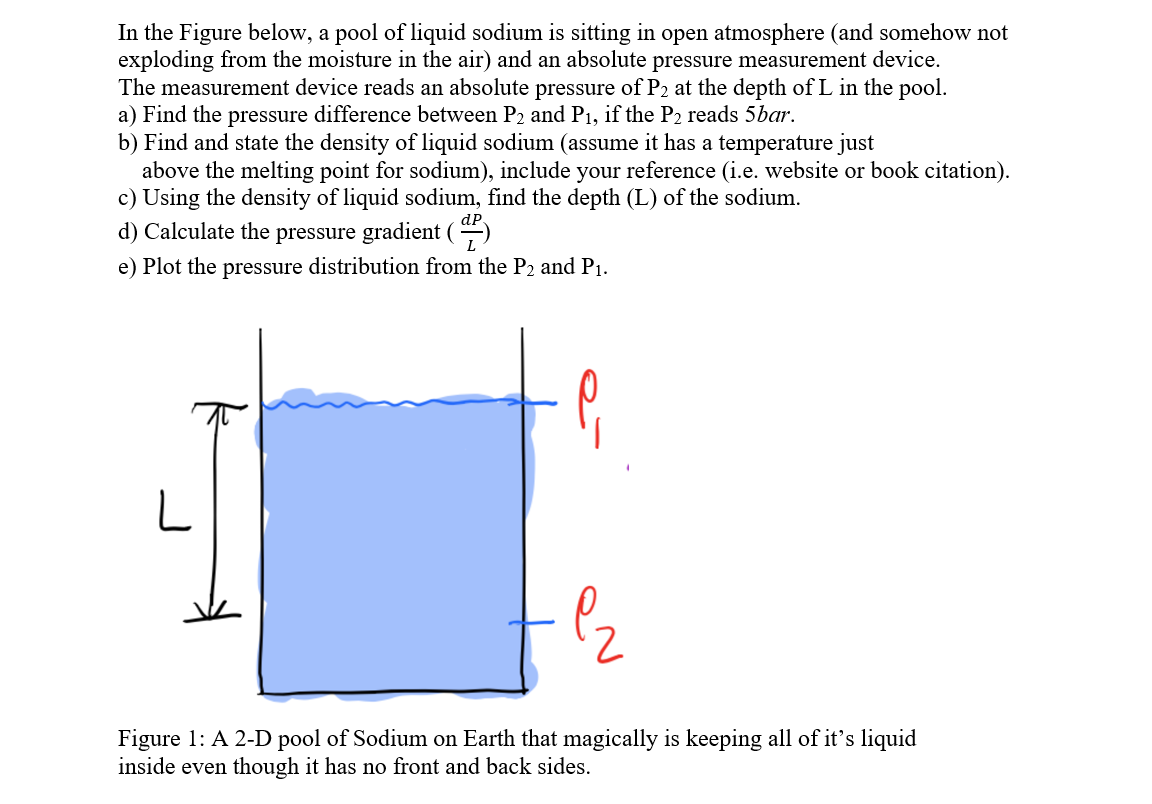I posted this question six times and no body wants to try the last question. I only need question (e). I need the graph ONLY. The question is solved from (a) to (d). If you want the answers from (a) to (d) . Here it is: Answer : (a) 3.98675 bar (b) 927 kg/m3 (c) 43.83 m (d) (rho)(g) NOTE : Please I need the graph only. The last question (Question e). Atleast try it.
I posted this question six times and no body wants to try the last question. I only need question (e). I need the graph ONLY. The question is solved from (a) to (d). If you want the answers from (a) to (d) . Here it is: Answer : (a) 3.98675 bar (b) 927 kg/m3 (c) 43.83 m (d) (rho)(g) NOTE : Please I need the graph only. The last question (Question e). Atleast try it.
Principles of Heat Transfer (Activate Learning with these NEW titles from Engineering!)
8th Edition
ISBN:9781305387102
Author:Kreith, Frank; Manglik, Raj M.
Publisher:Kreith, Frank; Manglik, Raj M.
Chapter3: Transient Heat Conduction
Section: Chapter Questions
Problem 3.37P
Related questions
Question
I posted this question six times and no body wants to try the last question. I only need question (e). I need the graph ONLY. The question is solved from (a) to (d). If you want the answers from (a) to (d) . Here it is:
Answer :
(a) 3.98675 bar
(b) 927 kg/m3
(c) 43.83 m
(d) (rho)(g)
NOTE : Please I need the graph only. The last question (Question e). Atleast try it.

Transcribed Image Text:In the Figure below, a pool of liquid sodium is sitting in open atmosphere (and somehow not
exploding from the moisture in the air) and an absolute pressure measurement device.
The measurement device reads an absolute pressure of P2 at the depth of L in the pool.
a) Find the pressure difference between P2 and P1, if the P2 reads 5bar.
b) Find and state the density of liquid sodium (assume it has a temperature just
above the melting point for sodium), include your reference (i.e. website or book citation).
c) Using the density of liquid sodium, find the depth (L) of the sodium.
d) Calculate the pressure gradient ()
dP
e) Plot the pressure distribution from the P2 and P1.
Figure 1: A 2-D pool of Sodium on Earth that magically is keeping all of it's liquid
inside even though it has no front and back sides.
Expert Solution
This question has been solved!
Explore an expertly crafted, step-by-step solution for a thorough understanding of key concepts.
Step by step
Solved in 4 steps with 1 images

Knowledge Booster
Learn more about
Need a deep-dive on the concept behind this application? Look no further. Learn more about this topic, mechanical-engineering and related others by exploring similar questions and additional content below.Recommended textbooks for you

Principles of Heat Transfer (Activate Learning wi…
Mechanical Engineering
ISBN:
9781305387102
Author:
Kreith, Frank; Manglik, Raj M.
Publisher:
Cengage Learning

Principles of Heat Transfer (Activate Learning wi…
Mechanical Engineering
ISBN:
9781305387102
Author:
Kreith, Frank; Manglik, Raj M.
Publisher:
Cengage Learning